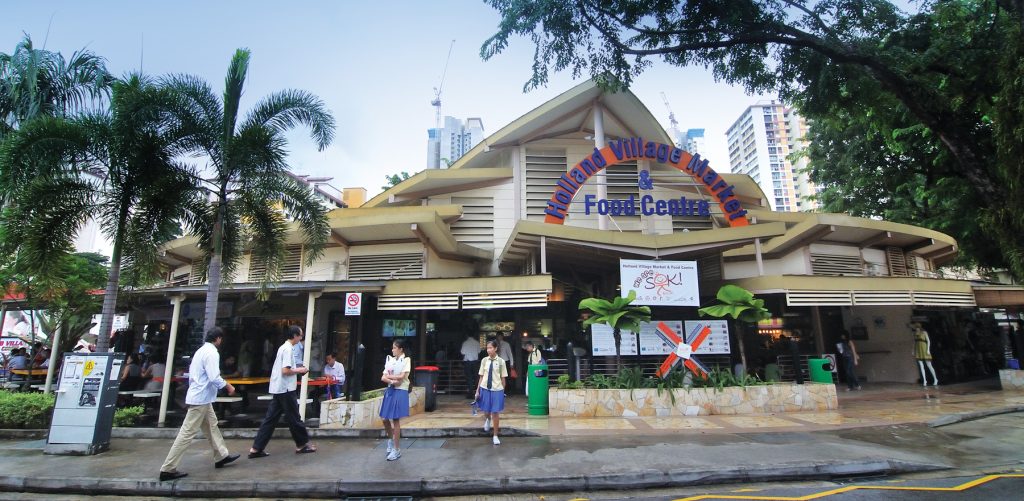
When it comes to the Lion City, some elements are inimitable: the cleanliness, the incredible MRT system, those amazing super trees, and the food – OMG, the food! It’s at the island’s iconic hawker centres that the true local flavour of Singapore is found – in every way. From chicken rice to biryani, chili crab to nasi lemak, roti prata to satay, the food is eclectic, and the hawker centres where we enjoy it are emblematic. Yet, they are more than just eating places. They are part of Singapore’s history and heritage. The rickshaw noodle seller may be gone, but the dedication and devotion to the hawker trade, and how it’s woven so deeply into local society, is as strong as ever.
 No one understands this better than Professor Lily Kong, President of Singapore Management University and an expert on urban transformations and cultural change in Asia. As a little girl in the 1960s, she grew up in an HDB estate in Redhill and tagged along with her mum as she shopped at the wet market and hawker centre on weekends.
No one understands this better than Professor Lily Kong, President of Singapore Management University and an expert on urban transformations and cultural change in Asia. As a little girl in the 1960s, she grew up in an HDB estate in Redhill and tagged along with her mum as she shopped at the wet market and hawker centre on weekends.
It wasn’t until Prof. Lily returned to the red dot after studying in London in her early twenties that she developed a true appreciation for hawker culture. She published her first book, Singapore Hawker Centres: People, Places, Food, in 2007 and released a second edition late last year. We sat down with Prof. Lily to find out more.
Congratulations on your second book. How do the two publications differ?
Thank you! The first publication delves into hawker culture’s significance with a focus on the beginnings and growth of hawker culture in Singapore. The second edition continues the legacy of the first edition by shedding light on how hawker culture has developed since then. It highlights the acquisition of the 2021 inscription on the UNESCO Representative List of Intangible Cultural Heritage of Humanity and further explores the importance of hawker culture as a Singaporean icon.
With 16 years in between the two books, there must have been lots of development …
When I wrote the first one in 2007, I thought I’d created the definitive book and there wouldn’t be another. At that time, the Singapore government had decided there would be no more new hawker centres because young people wanted fast food in air-conditioned spaces and it was believed that the trade was only for older generations. However, when new estates were built, young people started to ask where the hawkers were, so there was a turnaround in government policy.
“There is no understanding of Singapore without insight into hawker culture”
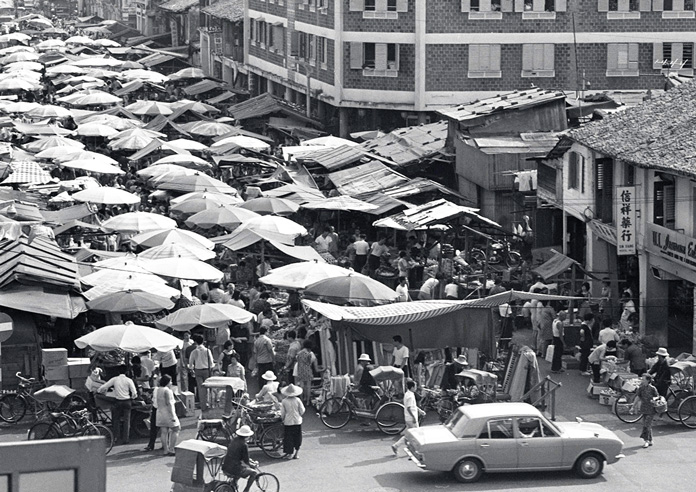
So the hawker trade continued to boom?
Well, Covid struck so the hawker trade started to evolve. Technology was fast changing the world, and the pandemic accelerated new ways of ordering, paying for, and enjoying food. The digital hawker came into play and really changed the face of enterprise.
Did you have to do lots of updating?
The chapter on the people behind the hawkers – those doing the cooking, the cleaners, the Hawker Association Chairperson who creates the community – had to be rewritten due to the new online food ordering platforms such as Grabfood, Food Panda, and YQueue (yqueue.co/sg) created by SMU students. We still have the traditional hawker doing things the way they did decades ago, but they now work in parallel with a whole new group of people.
Did you revisit participants from the first edition?
Amendments had to be made as, after sixteen years, some hawkers had retired or passed on. I had a favourite grandma who used to sell porridge and duck at Chinatown Point. I really wanted to update her story as in the mid 2000s, when she was in her 80s, she told me she was going to keep working as long as she could. Alas, she retired. I also had the opposite challenge with some younger people who had entered the hawker trade but only stayed for a short period.

What else had changed?
The diversity in the types of food available at Singapore’s hawkers now is huge. In 2007, some traditional foods were falling out of favour, for example, Rickshaw Noodles but they have emerged on the scene again. Then there are new types of food that were not so apparent sixteen years ago. We always had Chinese food at hawker centres such as Hokkien, Cantonese, and Teochew, as they were the three main dialect groups, but due to the migration of more mainland Chinese to Singapore we can now get Hunan, Hubei and Dongbei dishes – flavours that were not so popular in Singapore in the early migrant foods of the 1900s.
What has been lost over the years?
I say with caution that in the past there were more family hawkers where the parents worked and children helped after school and in the holidays. We see less of that today, but of course, I can understand why. When hawker parents work so hard to put their children through education, they hope for a better life for them which doesn’t involve having to sweat it out. The likelihood we have of succession within hawker families is less now, and it does give me a sense of loss.
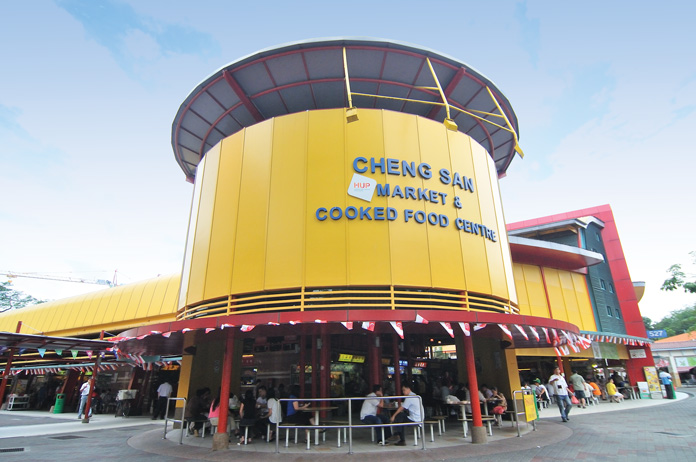
Have many hawkers disappeared?
More noticeable are the hawkers that have evolved from their original state. The market I went to in Tiong Bahru as a child consisted of sheds. It then evolved into a built structure and has now become an art deco building which reflects the design of the area. Indeed, while the architecture has changed at Tiong Bahru market, there is a husband and wife team in their 80s who have worked there since they were young. Back in the 1940s, when hawking was ‘illegal’ as there were no official licenses, he was a chicken seller and she was a vegetable seller. When the health inspector showed up, one would help the other to wrap up their wares and run away, and that’s how their romance blossomed!
What do you think makes hawker culture so intrinsic to Singapore?
It is just such a part of our daily life. When Covid struck we collectively felt it with everybody asking, “What are we going to eat now?”. As Singaporeans, hawker culture is so wrapped up in our existence and represents the multiculturalism that our city-state stands for – not just in the Chinese, Malay, and Indian food categories – in all its multiplicities. It has undoubtedly shaped our identity. There is no understanding of Singapore without insight into hawker culture.
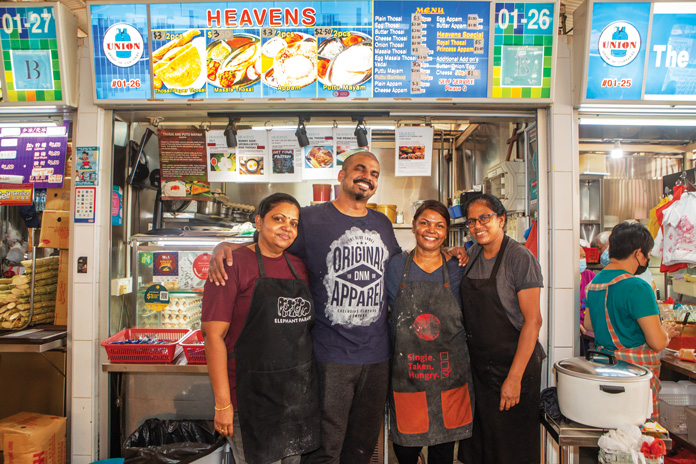
Any personal favourite foods?
Heavens at Ghim Moh Market (20 Ghim Moh Road, #01-26, 270020), sells fantastic Indian fare such as buttery appam, thosai and puttu mayam. Get chwee kueh (steamed rice cakes with fried preserved radish) from Tiong Bahru Market and prawn noodles from the hawker centre at Old Airport Road. Controversially, I don’t agree with some of the stalls who have Michelin stars.
What else in Singapore would you like to gain UNESCO World Heritage protection?
I would love to see Peranakan culture considered. I was involved in the process of putting up the bid for hawker culture protection, and it was chosen because we wanted something that came across in all demographics and segments of the Singapore community. Some may argue Peranakan culture does not do this, but I would say that it has a fusion of Malay-Chinese and Indian-Chinese culture and I believe that cuts across different sections of the population.
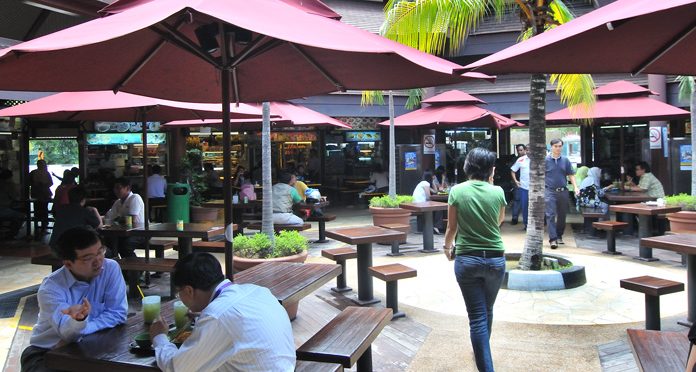
How do you hope the hawker trade will develop?
I would personally like to see the introduction of more food options from different parts of the world. Some would prefer to focus on traditional dishes such as chicken rice and fried kway teow and are suspicious of new-fangled fare, but I hope it does not have to be either/or. We already have food and cooking styles from Korea, Japan, Europe, and so forth which makes our hawkers a microcosm of Singapore society. Indeed, there’s definitely scope for an Australian or New Zealand hawker stall somewhere!
DID YOU KNOW?
- There are 119 hawker centres in SG
- With around 700 stalls, Chinatown Complex Market is Singapore’s largest hawker centre and market today
- Tekka Market, built in 1915, was also known as Kandang Kerbau Market. The name, Kandang Kerbau, means “buffalo enclosure” in Malay, referring to the area’s cattle trade
- Geylang Serai Market was opened in 1964 and rebuilt in 2009. Its architecture is inspired by Malay cultural heritage
- Tiong Bahru Market opened in 1951 as Seng Poh Road Market. It also functioned like a town centre for public meetings and political rallies

Find Singapore Hawker Centres: People, Places, Food by Professor Lily Kong at epigrambookshop.sg and amazon.com








